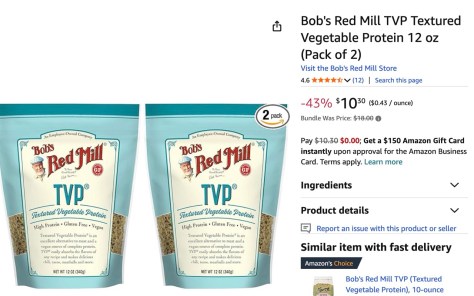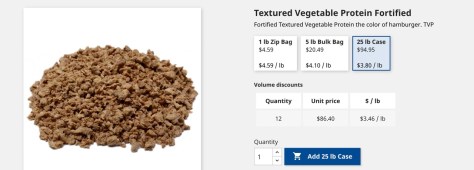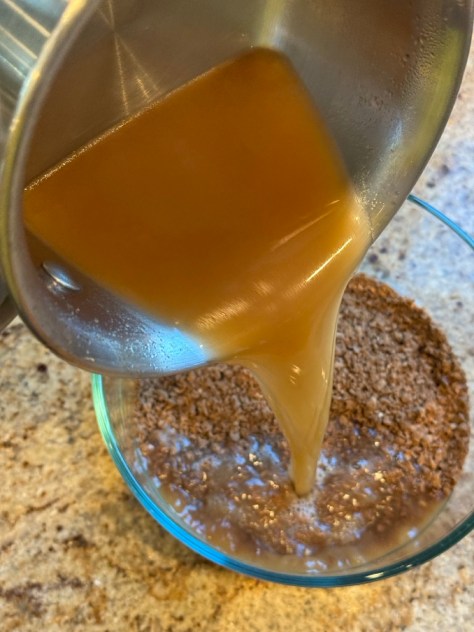Another in my series to battle grocery inflation and the Trump tariff taxes. Live your best life!
The combination of inflation, ‘shrinkflation,’ and the Trump tariff taxes is increasing food budgets to out-of-control proportions for many U.S. citizens. Generations have been raised on convenient, ultra-processed foods that are tasty, easy to prepare, and inexpensive. However, they are not only unhealthy, but they have also been steadily increasing in price. Food costs are now so high that individuals and families are struggling to afford enough for their weekly meals.
I was raised in the 1960s in a family of 7 with one parent who worked outside of the home. We always ate well because my parents practiced skills that they learned during the Great Depression. Convenience foods were available, but not to the same extent as they are today. It was common to eat at home and prepare food from scratch.
I found myself in an unusual situation, as I was retired yet still had children living with me. Feeding them nutritious food was important, and I also wanted to teach them some of the money-saving skills that I learned as a child.
Cooking basic foods from scratch is a critical skill to have to survive inflation and the Trump tariff taxes. It still “hurts” to go grocery shopping, but I know that there will be food on the table. Currently, my one son is in grad school and at home, but my other kids frequently visit, and I’m always happy to feed them a meal.
In today’s post, I share a recipe for lentil soup with sausage. This recipe is very flexible and can be made with a variety of sausages, including cut-up hot dogs. Additionally, it can be made as a vegetarian dish by omitting the meat and using a vegetable broth. It relies on lentils, which are very inexpensive, and whatever sausage you have on hand. Unlike beans, lentils don’t require soaking, and they easily cook in this soup in under an hour.
I made this soup yesterday, and three of us ate to our fill. There is a lot of soup left for lunches, and I’m certain I’ll have to freeze some in vacuum bags for future meals. This recipe makes quite a bit.
Lentils come in a variety of colors and varieties. Although they have slightly different characteristics, they are all high in carbohydrates, protein, and fiber. They are also excellent sources of some vitamins and minerals and are low in fat.
You can buy lentils in cooked in cans, but they are the most inexpensive when purchased dry. All grocery stores sell lentils, and you can find them in the same area where dried beans are kept. A pound of dry lentils yields approximately 2.5 cups. Many recipes use one to one and a half cups of lentils, and you can buy a pound of them for around $1.50, even less if you have access to a bulk store.

Lentils are grown in the US, with Montana being the largest producer. Inflation has impacted costs, but the Trump tariff taxes will have a less significant impact on their price. Unfortunately, the U.S. exports a lot of lentils and that will be impacted by retaliatory tariffs from other countries. This may negatively impact independent farmers.
I make this soup in a heavy pot called a Dutch Oven. My Dutch oven is pricey, but you can find inexpensive ones online and at places like HomeGoods. Inexpensive Dutch ovens may have less durable enamel, but they will perform just as well as the high-priced versions. Don’t have a Dutch oven? Use a large pot with a lid. Like many soup recipes, this recipe can also be made in an Instant Pot or slow cooker. If you go those routes, you may need to adjust liquid levels, and you will need to adjust cooking times. Simply Google for a recipe, for instance, “Lentil soup recipe for an Instant Pot” to get an idea of the changes you need to make. Of course, you can use your found recipe, but I know this one tastes great, even if you modify it somewhat.
Sausage Lentil Soup
-Cooking oil
-1 pound sausage. You can use more or less. If you are using a smoked sausage, such as Polish sausage, you can slice it and add it directly to the soup. However, I like to brown it as it adds to the flavor. If you are using fresh sausage, such as Italian sausage, you need to brown it first. Use whatever sausage you like. I have made this soup with hot dog slices that I browned, and it was delicious. Also, don’t get hung up on the amount of sausage. I had a package of Polish sausage in the fridge that was 13 ounces, and it was enough.

-1 onion, any type, diced. I had some red onion, so that is what I used.
-2 to 3 stalks of celery sliced. A great way to use up limp celery. Don’t have any fresh? Use dehydrated.
-3-4 carrots diced.
-jar garlic, heaping spoonful. Of course, you can use a couple of cloves of fresh garlic or even some powdered garlic. This is home cooking after all.
-heaping spoon of tomato paste. Don’t have it? Omit it.
-1 tablespoon of Italian seasoning. You can also use Oregano, but cut down the amount to a teaspoon.
-½ teaspoon of fennel seed. You can omit this, but it really adds to the soup.
-1 or 2 bay leaves. You can omit these, but they add a subtle “something.”
-¼ teaspoon red pepper flakes. You can omit this, but it really adds to the soup. If you like foods to be “hot,” you can up the flakes to around ½ teaspoon or a bit more.
-1/2 teaspoon of black pepper.
-1 teaspoon salt to start. Adjust this seasoning at the end of cooking. Remember, you can always add salt, but you can’t remove it. If you are using chicken bouillon, start with even less salt, as bouillon is salty.
-28 oz can of tomatoes. If using whole, break them up.
-5 cups chicken stock. I only had four cups, and so I added a cup of water; all was good. You can use vegetable stock, chicken bouillon/water (reduced your salt content), or even water alone if that is what you have. Stock does add complexity and flavor.
-1 and ½ cup dry lentils that you rinse in water (using a sieve or colander).
-Some greens like spinach, kale, or even salad greens (optional).












Soup is a great way to stretch your budget and there are many different soups so you will never tire of it. You can be very flexible when making soups and still get a good result. The more times you make any soup the more comfortable you will become in adjusting and substituting. Plus, soup is really easy to make. Once in a pot, it does its own thing and there is no problem cooking it for a long time as that often enhances its flavor.
Make some soup today, and save some money!
Enjoy!
Mike

























